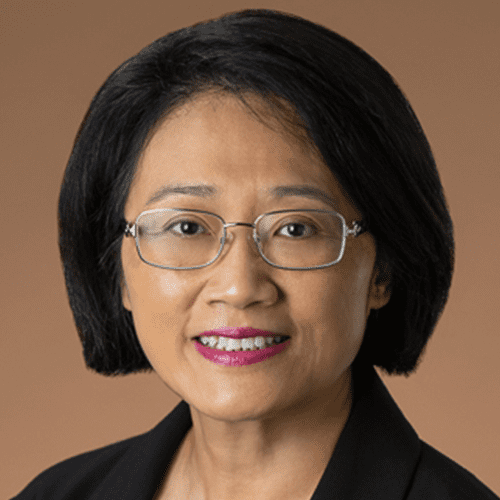
- Graduate Field Affiliations
- Chemical Engineering
- Materials Science and Engineering
Biography
Qiuming Yu received her B.S. and M.S. in Chemistry from Nanjing University, China in 1985 and 1989, respectively, and her Ph.D. in Chemical Engineering from Cornell University in 1995. She was a postdoctoral fellow in the Micro-devices Laboratory at the NASA Jet Propulsion Laboratory, California Institute of Technology, from 1995-1996. After spending three years as a research assistant professor in Chemical Engineering at Kansas State University, she moved to the University of Washington and was a full professor in the Department of Chemical Engineering. She joined the Robert Frederick Smith School of Chemical and Biomolecular Engineering at Cornell University in July 2020 as a professor.
Research Interests
Professor Yu’s research focuses on the fundamental studies of plasmonic and semiconductor materials and the development of devices for biosensing and optoelectronic applications with an integrated computational and experimental approach. For biosensing, her research group is primarily using optical signals, specifically, surface plasmon resonance and surface-enhanced Raman scattering, as the transducing mechanism. They have designed plasmonic nanostructures and developed surface chemistries to enable specific, sensitive and accurate detections of small molecules, proteins and microorganisms for a broad application ranging from biomedical diagnosis, food safety, environmental monitoring, to homeland security. Her research group is recently interested in the development of biocompatible conducting polymers for bioelectronics and organic electrochemical transistors with the goal for wearable and remote sensing. For optoelectronic materials and devices, her research lab focuses on the studies of structural and optoelectronic properties of halide perovskites, organic semiconductors, and nanocomposites, as well as fundamental physics of charge generation, separation, and transport in devices. They are developing new hole and electron transport materials to facilitate charge transport and collection. Her lab is also interested in the integration of plasmonic nanostructures into photovoltaic devices and photodetectors to utilize hot electrons, and to manipulate light absorption and electric field distribution. Her group aims to develop light and mechanical flexible photovoltaic devices and spectral-selective photodetectors for energy harvesting and light sensing.
- Biomolecular Engineering
- Nanoscale Electronics, Photonics and Materials Processing
- Sustainable Energy Systems
- Complex Fluids and Polymers
- Advanced Materials
- Advanced Materials Processing
- Materials Synthesis and Processing
- Nanobio Applications
- Nanotechnology
- Bioengineering
- Biomedical Engineering
- Biomedical Imaging and Instrumentation
- Sensors and Actuators
- Molecular and Cellular Engineering
- Tissue Engineering and Biomaterials
- Colloids and Interfacial Science
- Microfluidics
- Microfluidics and Microsystems
- Polymers and Soft Matter
- Surface Science
Teaching Interests
Chemical Engineering Laboratories, Transport Phenomena, Thermodynamics
Select Publications
-
Esopi, E.R., and Yu, Q.M.*, Plasmonic Aluminum Nanohole Arrays as Transparent Conducting Electrodes for Organic Ultraviolet Photodetectors with Bias-Dependent Photoresponse, ACS Applied Nano Materials, 2, 4942 (2019).
-
Zhang, X.Y., Zheng, E.J., Esopi, M.R., Cai, C., and Yu, Q.M.*, Flexible Narrowband Ultraviolet Photodetctor with Photomultiplication Based on Wide Band Gap Conjugated Polymer and Inorganic Nanoparticles. ACS Applied Materials & Interfaces, 10, 24064 (2018).
-
Tosado, G.A., Lin, Y-Y, Zheng, E.J., and Yu, Q.M.*, Impact of Cesium on the Phase and Device Stability of Triple Cation Pb-Sn Double Halide Perovskite Films and Solar Cells. Journal of Materials Chemistry A, 6, 17426 (2018).
-
Galvan, D.D., Parekh, V., Liu, E., Liu, E.-L., Yu Q.M.*, Sensitive Bacteria Detection via Dielectrophoretic Enhanced Mass Transport Using Surface Plasmon Resonance Biosensors, Analytical Chemistry, 90, 14635 (2018).
-
Esopi, M.R., Calcagno, M., and Yu, Q.M.*, Organic Ultraviolet Photodetectors Exhibiting Photomultiplication, Low Dark Current and High Stability, Advanced Materials Technologies, 1, 1700025 (2017).
Select Awards and Honors
- Innovators Team Award, College of Engineering, University of Washington 2009
- NASA Tech Briefs Award, National Aeronautics and Space Administration 1998
- U.S. Department of Education Fellowship 1993-1994
- Graduate Research Assistant, U.S. Semiconductor Research Corporation 1990-1993
Education
- B.S., Chemistry, Nanjing University 1985
- M.S., Chemistry, Nanjing University 1989
- Ph.D., Chemical Engineering, Cornell University 1995
- Postdoctoral Fellow, Micro-Devices Lab, NASA Jet Propulsion Laboratory, California Institute of Technology 1995-1996